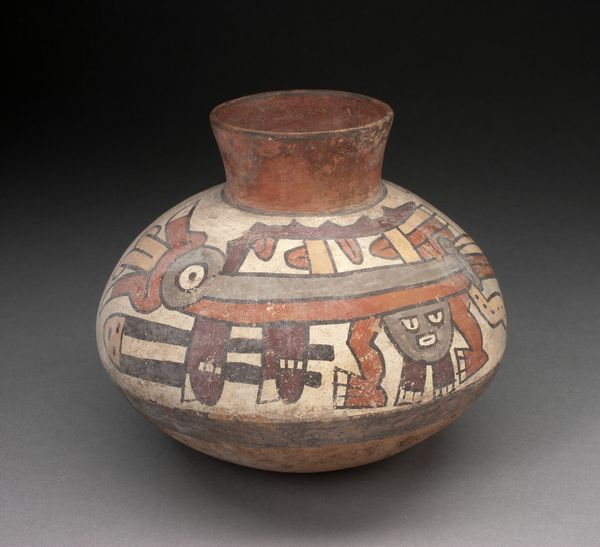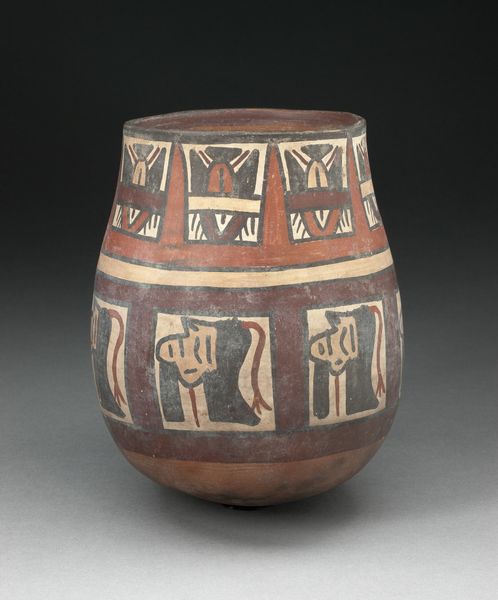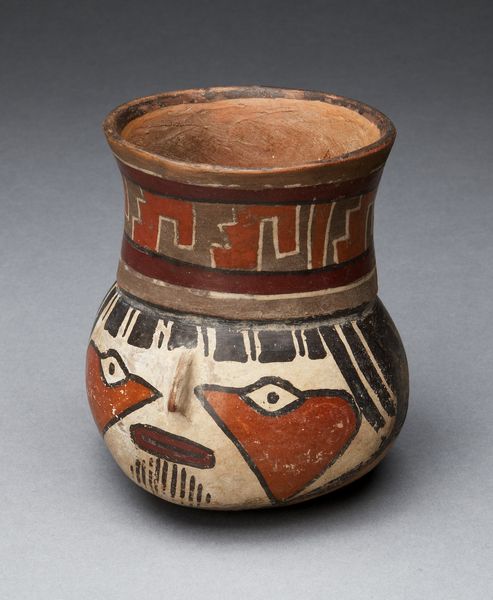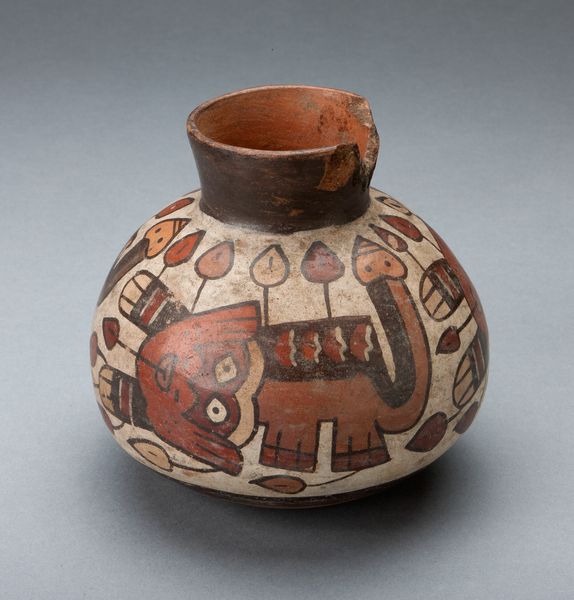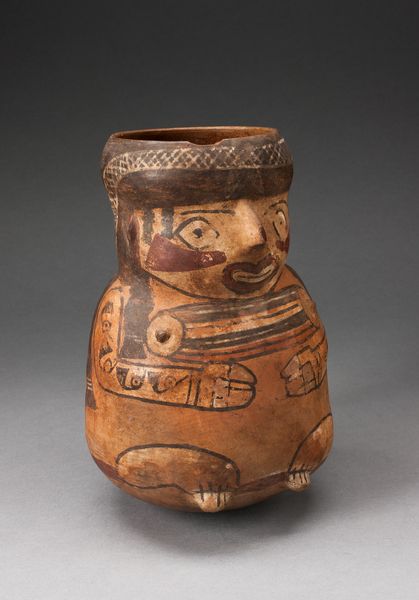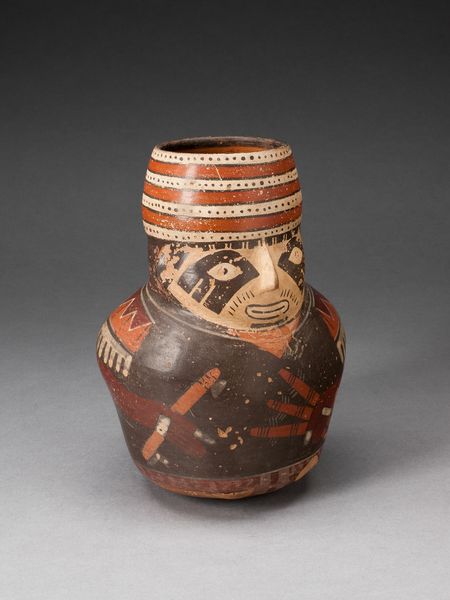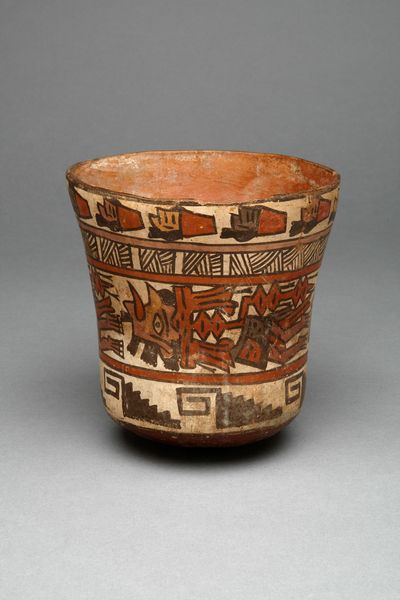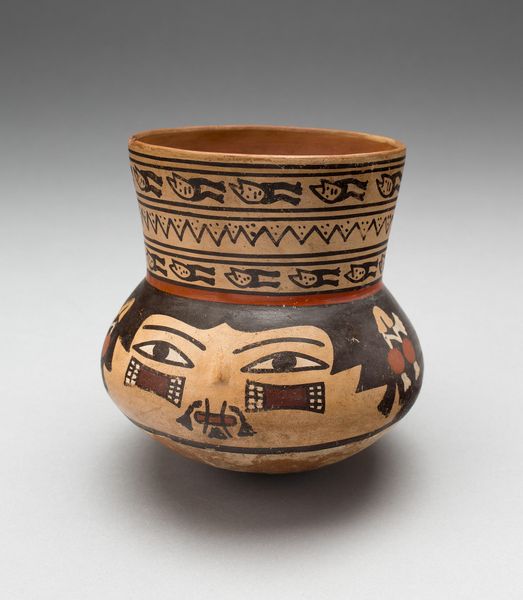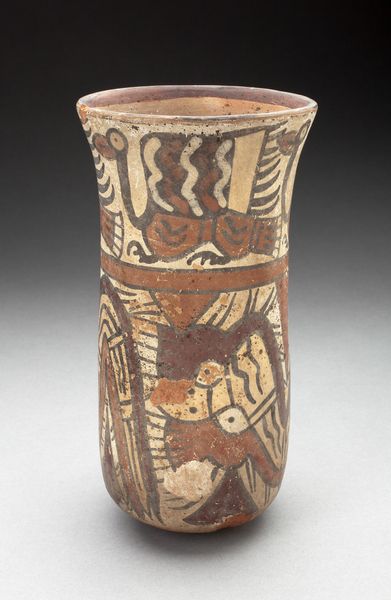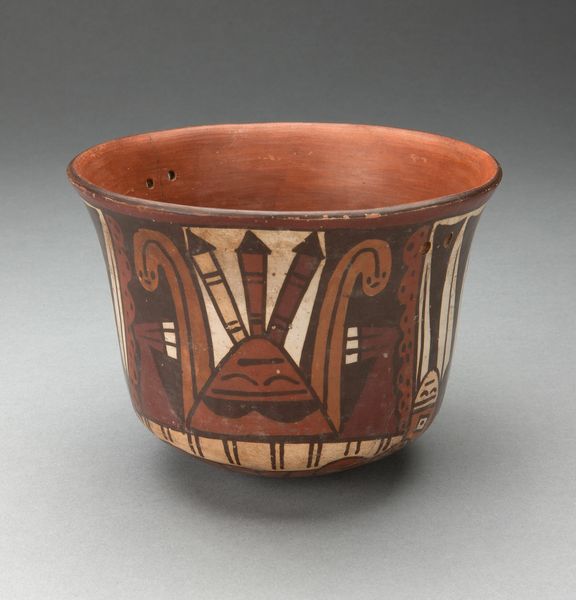
Stepped-Rim Beaker Depicting Human Figures, Faces, and Abstract Motifs c. 180 - 500
0:00
0:00
ceramic
#
ceramic
#
figuration
#
ceramic
#
indigenous-americas
Dimensions: 14.6 × 11.4 cm (5 3/4 × 4 1/2 in.)
Copyright: Public Domain
This stepped-rim beaker depicting human figures, faces, and abstract motifs was created by the Nazca people. It resides at the Art Institute of Chicago. As we consider this object, it's crucial to remember that the Nazca civilization flourished in the arid coastal region of what is now modern-day Peru. The culture was at its peak between 100 BCE and 800 CE. The Nazca were deeply connected to their environment, relying on complex irrigation systems to cultivate crops in the desert. Notice the intricate designs that wrap around the beaker. Human figures, faces, and abstract motifs intertwine, creating a visual language that speaks to the Nazca worldview. What stories do you think these images tell? How might they reflect the social hierarchies and power dynamics of the time? The Nazca’s strategic placement in an arid environment can speak to their innovative technologies, and community interdependence. The cultural emphasis on transformation might explain the beaker’s imagery. The beaker's shape and decoration challenge us to think about cultural exchange and societal values. How do we create narratives about ourselves in the objects that we use?
Comments
No comments
Be the first to comment and join the conversation on the ultimate creative platform.
